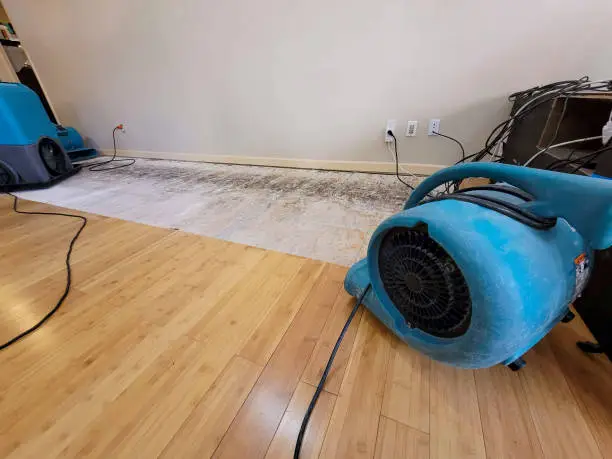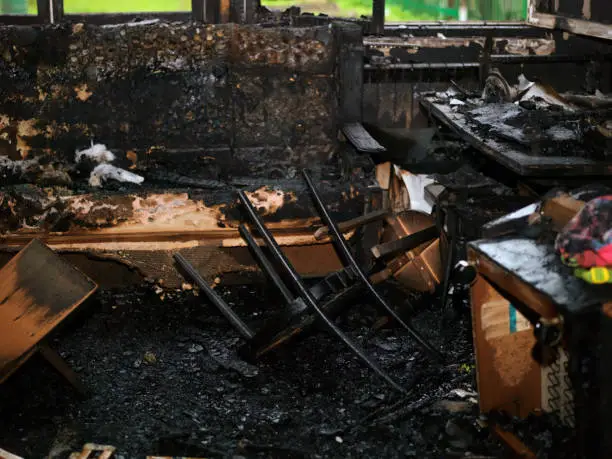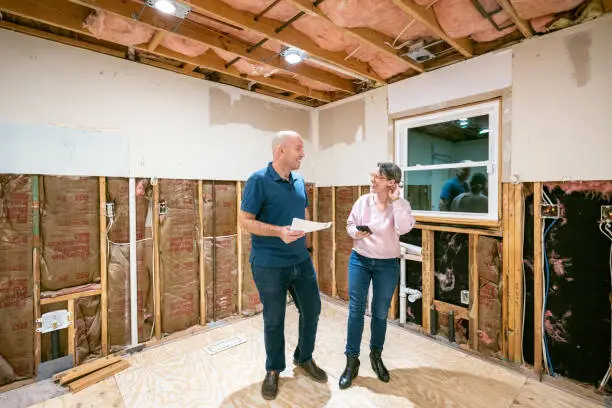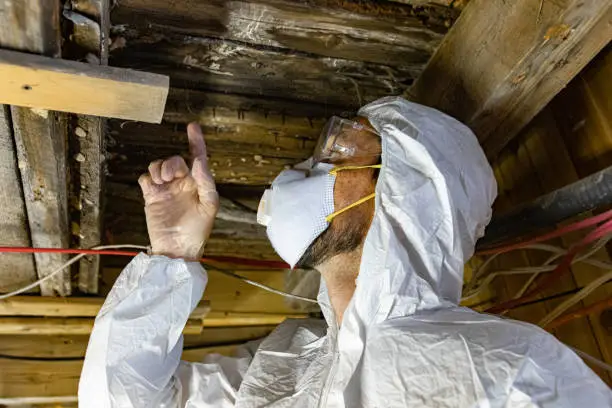Should water leaks, fire or mold or something else cause damage to your home, prompt damage restoration will restore it, so it’s safe and like before. It helps lower your stress to know what is involved in restoration, find a good contractor and understand what to expect. In this guide, you’ll find everything you need to know about damage restoration, the damage types, your budget and most frequently asked questions.
Understanding Damage Restoration: What Homeowners Need to Know
Any water, fire, mold or disaster damage to your home can best be repaired with the help of professional contractors. Not only do they remove debris, but they also fix all kinds of damage to your house, including unseen problems, to keep it safe, standing and healthy. Professionals in restoration clean up the mess from water, soot, mold and decay and restore the area to its original state using up-to-date methods. When you understand what these services provide, you can choose them which will help you restore your home fast.
Types of Damage Restoration: Water, Fire, Mold, and More

- Water Damage Restoration: This is one of the most common types, caused by flooding, burst pipes, or leaks. Water must be extracted, things dried, spaces dehumidified, and structures repaired to avoid mold and prevent the building from decaying.
- Fire Damage Restoration: Fire restoration includes removing soot, smoke, and debris, repairing structural damage, and eliminating odors left by smoke.
- Mold Remediation: Mold often develops after water damage or in humid environments. Experts get rid of the mold spores, clear the affected area and treat the surfaces to keep mold from coming back.
- Other Services: Some companies also handle sewage cleanup, storm damage, and specialized restoration for mobile homes or unique structures.
How Damage Restoration Services Protect Your Property Value
Rapid and proper damage restoration keeps your home from deteriorating and protects your family’s health. If left alone, water damage can weaken the home’s foundation and can also cause mold growth and fire damage can damage the home’s structure. By using restoration services, you enhance your home’s appearance, boost safety and prepare it well for possible sales or refinancing. Restoring your home with experts ensures you keep its worth and your family’s safety.

Finding Reliable Damage Restoration Companies Near Me
Selecting the best damage restoration company helps guarantee good work and keeps you at ease. Prefer companies with experience in cleaning up and repairing the same kind of damage you have. Expert contractors getting the job done are professionally licensed, insured and have advanced tools for each phase of the restoration project. Look through reviews, obtain references and verify the person’s professional certificates to ensure they are reliable.

Key Qualities to Look for in a Damage Restoration Contractor
-
Experience and Expertise: Proven track record in handling water, fire, mold, or other damage restorations.
-
Prompt Response: Ability to respond quickly to emergencies to minimize damage.
-
Comprehensive Services: Offering inspection, cleanup, repair, and final inspection under one roof.
-
Clear Communication: Transparent estimates, timelines, and updates throughout the project.
-
Licensed and Insured: Compliance with local regulations and protection for you and your property.
Questions to Ask Before Hiring a Restoration Service
- Have you dealt with this kind of damage?
- Are you both qualified and insured to perform the job?
- Can you show me some past work you’ve completed?
- When can you start restoration and what expenses are involved?
- Do you manage paying claims and verify documentation properly?
The Damage Restoration Process: Step-by-Step Guide

Initial Assessment and Damage Evaluation
An inspection is done first to see how much damage has occurred. Professionals depend on specialized instruments such as moisture meters and infrared cameras, to pick up on hidden problems. With this evaluation, it becomes easier to identify necessary repairs, set overall priorities and predict when and how much each job will cost.
Cleanup, Repairs, and Final Inspection
When the assessment is finished, work starts on removing the water, clearing debris or cleaning soot, based on the damage. After that, the next task includes repairing the building’s structure, handling mold issues and changing damaged areas such as drywall or flooring. Lastly, everything is checked to be sure all damage is addressed and the house is in good condition once more.
Budgeting for Damage Restoration Projects
Typical Costs and Insurance Considerations
How much you will pay for restoration depends greatly on the extent of the damage. Restoring water damage will usually cost a few thousand dollars, but adding fire or mold remediation could bring the bill up to tens of thousands. Most policies that cover homeowner insurance include sudden and accidental damage, with some restrictions. It’s necessary to check your home insurance, cooperate with your contractor and keep records of all damages and relevant claims.
Tips for Managing Restoration Expenses Efficiently
- Work fast to protect your property and lower the amount you have to repair.
- Put your effort into repairing things that affect safety and prevent moisture from entering the building.
- Shop around and find prices and descriptions from different companies.
- Take advantage of your insurance plan by supplying complete documentation.
- You may want to restore your building in phases if your budget is not adequate.
Frequently Asked Questions (FAQs)
1. How soon should I start damage restoration after a disaster?
Every effort should be made to repair damage within the first few days after a disaster. Finding the solution quickly will stop mold, cracks in your walls and bad smells in your home. If you don’t repair your home right away, it can be more expensive and put your family’s health at greater risk. Professional restoration companies are ready to come at any time to stop damage and get started with cleaning up.
2. What types of damage do restoration companies typically handle?
Restoration companies regularly handle water damage, fire and smoke issues, mold removal and sometimes problems related to sewage or storms. Different types of damage need different tools and professionals to be cleaned up and repaired completely. A good example is that water damage restoration makes use of drying and dehumidifying, whereas fire damage restoration requires cleaning up soot and deodorizing. Taking the time to pick a company knowledgeable about your type of damage is very important.
3. Will my homeowner’s insurance cover damage restoration?
Although most home insurance policies are designed for sudden and accidental damage including broken pipes, fires or storms, the level of coverage changes depending on your policy provider and what caused the damage. Make sure you study your policy and discuss your questions with your insurer to be sure you know what is covered. Restoration contractors make paperwork easier and communicate directly with insurance firms to help with damages claims. Taking photos and keeping a report of all the damage is useful for your claim.
4. How do professionals detect hidden damage in my home?
Highly trained experts in restoration make use of moisture meters, infrared cameras and instruments that measure air quality to detect problems that others can’t see. They allow professionals to detect if there is moisture, mold or structural trouble that may become worse without treatment. By entirely tracing all damage, we can make sure it is corrected during the restoration and there is no risk for anyone’s health in the future. Doing this thorough evaluation is very important for the restoration to be successful.
5. Can I live in my home during the restoration process?
How much damage has been caused will influence if you can stay in your house during restoration. If there is only minor water or mold damage, you may stay, but you will likely have to move temporarily if the fire or structure is severely damaged. Your restorer will guide you according to the details and size of the work required. Occasionally, your insurance policy will pay for your living costs if your home is being restored.
Need advice on fixing your property after sudden problems pop up? At KBR Kitchen and Bath, we help you locate skilled restoration people and show you how to manage the process. Drop by our Bethesda, Fairfax or Manassas showrooms to find out how to protect and restore your home using expert advice. Today is the day to start getting your home back to normal.

